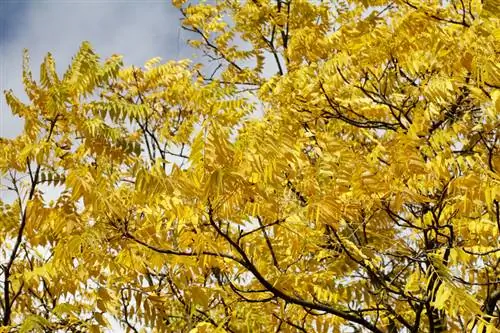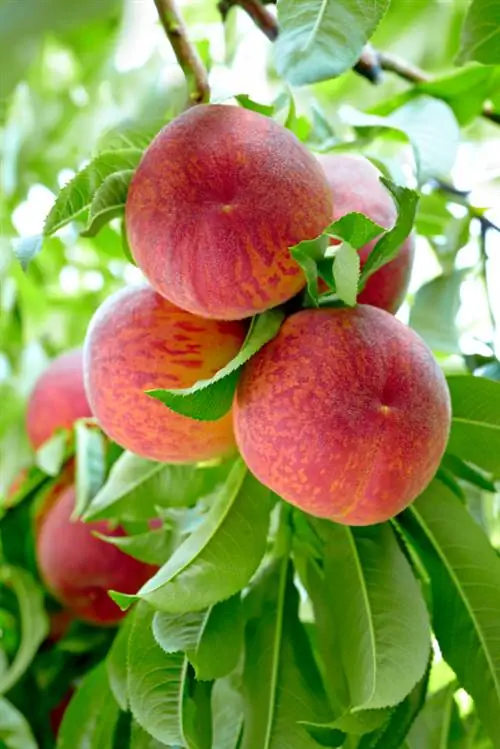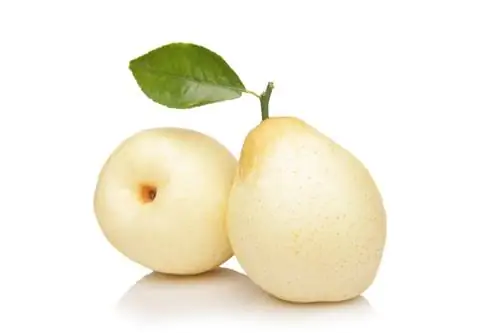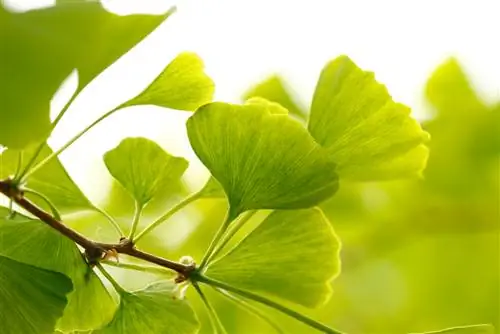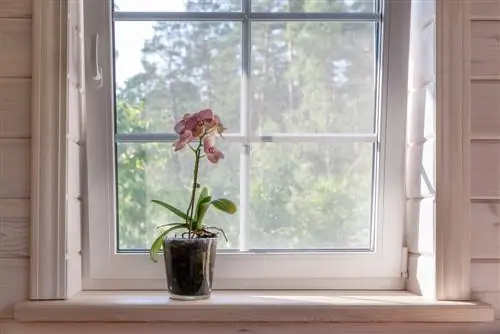- Author admin [email protected].
- Public 2023-12-25 17:45.
- Last modified 2025-01-23 11:22.
If you are looking for a tree with rapid growth, a magnificent crown shape and easy care, you cannot ignore a Gleditschie. The outstanding attribute of the decorative large tree are the spectacular legumes in autumn, up to 50 cm long, accompanied by distinctive pinnate leaves. All questions regarding cultivation will receive a valid answer here.
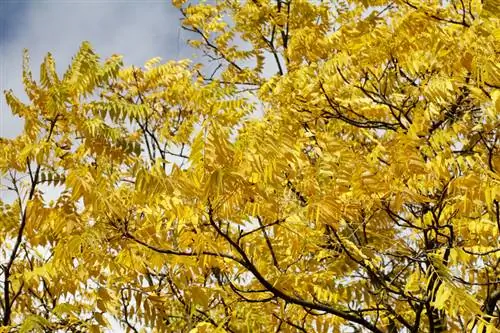
What is a Gleditschie and how do I care for it?
The Gleditschia is a large, decorative, fast-growing tree that thrives in sunny locations with normal garden soil. The long legumes are particularly noticeable in autumn. Care includes watering, fertilizing, if necessary a topiary and winter protection in the first year.
Planting Gleditschie correctly
Plant the Gleditschia in a sunny location either in spring or autumn. The tree likes to spread its powerful root system in any common garden soil. Dig a pit with twice the volume of the root ball and loosen the sole with the rake. Put the excavated material in the wheelbarrow (€59.00 on Amazon) to add compost and horn shavings. Pot up the young tree and place it in the middle of the planting hole. Before you fill in the enriched soil, drive in a support post without damaging the roots. The surface of the root ball is flush with the surface of the soil. At the end, tamp down the soil and water. Finally, connect the trunk and support post with a rope by tying eight-shaped loops.
Care tips
Pamper your Gleditschie with this care program and she will look her best for many years:
- Watering the tree in summer drought
- Administer starter fertilization in March/April with compost or a slow-release fertilizer
- Light topiary with possible during the summer
- Extensive pruning is only carried out if necessary between November and March
In the year of planting, the young tree receives light winter protection by piling up leaves on the root disk and sticking brushwood around it. An adult leatherbush tree asserts itself against frost and snow on its own.
Which location is suitable?
The Gleditschie feels extremely comfortable in the sunny place. The location should be warm and protected so that the tree develops a dense, shapely crown and delights us with its bizarre legumes. In any normal garden soil, the vigorous leatherpod tree does a lot.
What soil does the plant need?
The location parameters for the decorative tree are wide-ranging. It thrives tirelessly in dry to moist soil, with an airy to firm structure. The only thing it doesn't like to be bothered with is waterlogging and compaction. A pH value between 5.5 and 8.0 is excellent for vitality. The tree develops its optimum in sandy-loamy and freshly moist soil.
When is flowering time?
The greenish flowers appear on the tree in June, loosely distributed in 10-12 cm long panicles. This inconspicuous appearance then develops into spectacular legumes in autumn. Deep red, yellow or brown in color and bizarrely curved, the fruits reach a length of up to 50 cm. If you have chosen a thornless hybrid, there will be no flowering or fruit decoration.
Cut the slide correctly
The American Gleditschia, which is frost-hardy in our latitudes, naturally develops a well-proportioned crown. For aesthetic reasons no pruning is necessary. Considering the rapid growth of 50 to 80 cm per year, there is nothing wrong with light topiary during the summer. Please keep in mind that this can affect the furious fruit stand in autumn. The best time for thorough pruning measures is the months from November to March, when the tree is in its leafless winter rest. Shorten branches that are too long just before an outward-facing leaf node. At the same time, thin out the crown thoroughly. With more lush branching, the tree does not react to pruning measures.read more
Pouring Gleditschie
When it comes to water supply, the tree is tough. Summer heat and dryness do not cause problems for a Gleditschie as long as the stress does not last for weeks. Therefore, water the tree thoroughly once or twice a week during a drought period. Let the garden hose run for 30 minutes.
Fertilize Gleditschie properly
The tree happily accepts starter fertilization in spring. Add ripe compost with horn shavings or another organic fertilizer to the surface of the root disc. You can optionally administer a mineral-organic long-term fertilizer for woody plants. It is important to note that watering is to be done abundantly afterwards.
Wintering
A Gleditschia is well hardy in the Central European climate. We only recommend piling up the root disc with autumn leaves in the year of planting. In addition, add brushwood all around or put up a reed mat so that the young tree gets through the first winter he althy. In the years that followed, the leather sleeve tree became so established that no precautions had to be taken.
Propagate Gleditschie
To propagate a Gleditschia, you can choose between the generative and vegetative methods:
- In the summer, cut half-woody, non-flowering head cuttings and let them root
- Cut leafless cuttings in winter, stick them in peat sand and care for them until they are rooted
- Sowing the seeds behind glass from February/March
So that the large seeds germinate quickly, roughen the shell with a file. Then place the seeds in room temperature water for 24-48 hours. At a constant temperature of 25 degrees Celsius, germination takes 14-28 days.
Is Gleditschie poisonous?
The leaves of a Gleditschia contain the alkaloid triacanthin, which can cause he alth problems if consumed intentionally or unintentionally. In addition, direct skin contact can trigger allergies in sensitive people. The long, narrow legumes do not contain this toxin. Rather, the ground seeds are used in America as a thickener for sauces and soups.
Gleditschia is not blooming
A young tree presents its first flowers after 3 years at the earliest. If the greenish panicle flowers are still missing, it is most likely a non-flowering hybrid. A sure sign of this are the missing thorns.
Can I cut off the thorns?
The long thorns give the tree an exotic look, especially during the leafless period next to the furious legumes. If you don't want to bother with it during maintenance work or want to protect children from injuries, simply cut off the thorns. As long as the bark is not injured, this measure does not affect a Gleditschie.
Beautiful varieties
- Sunburst: With golden shoot tips and white flowers, this tree sets elegant accents in your garden; 7-10 m high
- Skyline: The funnel-shaped crown is not armed with thorns, which is to the detriment of the flowers and fruit; 12-15 m high
- Rubylace: The wonderful bronze-red foliage color comforts the mighty thorns on the tree; 8-15 m high
- Shademaster: The crown with dark green leaves shines with golden yellow autumn color; 10-15 m high

